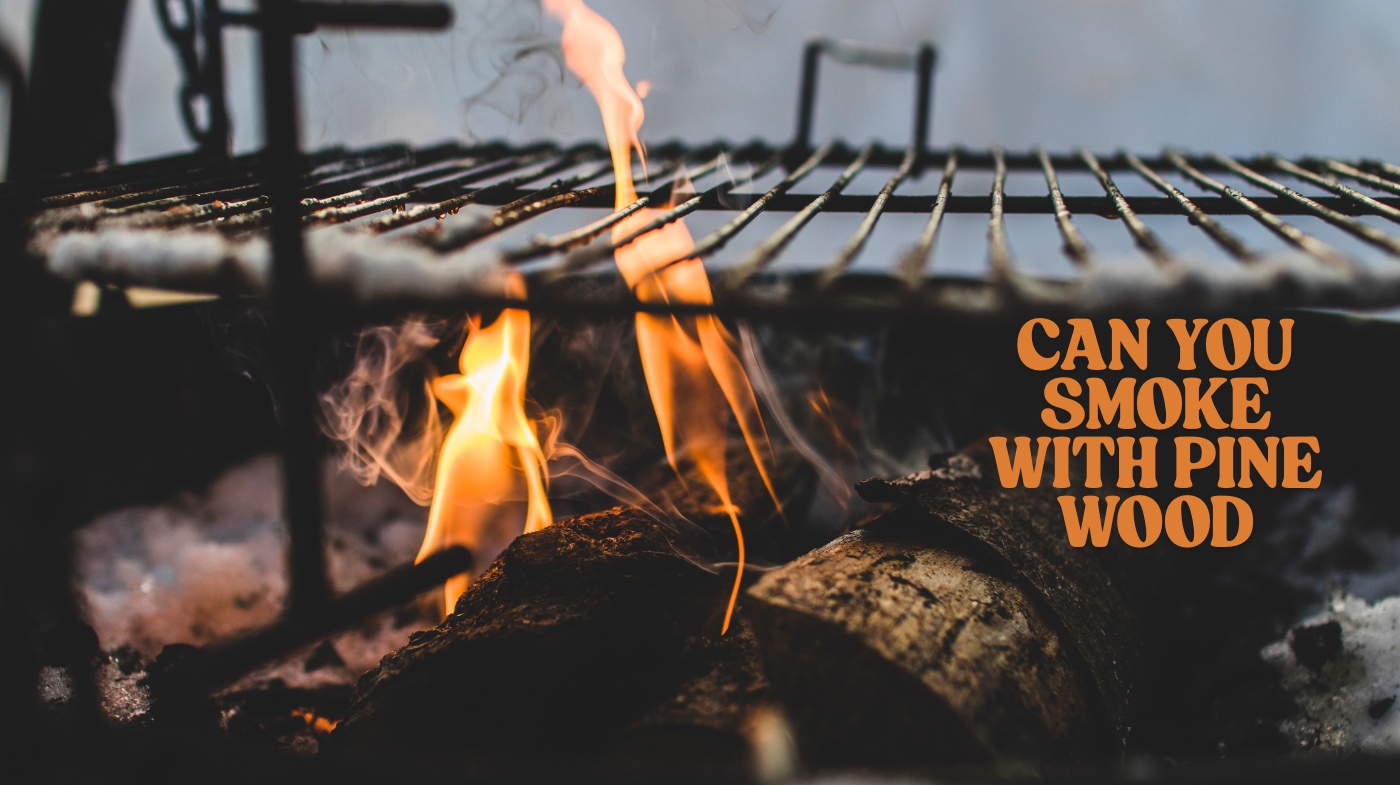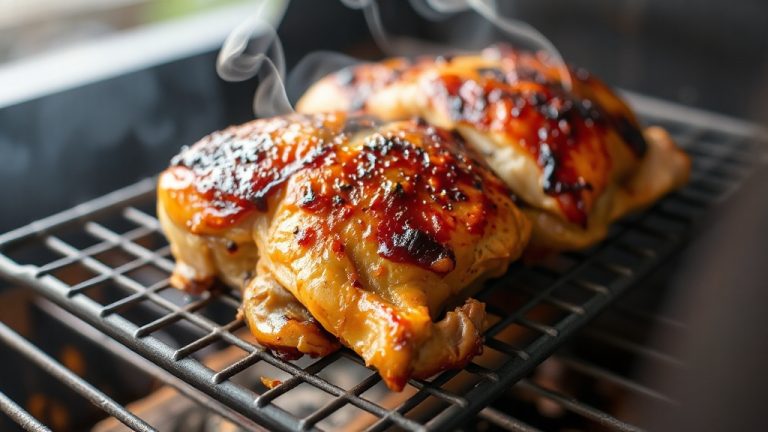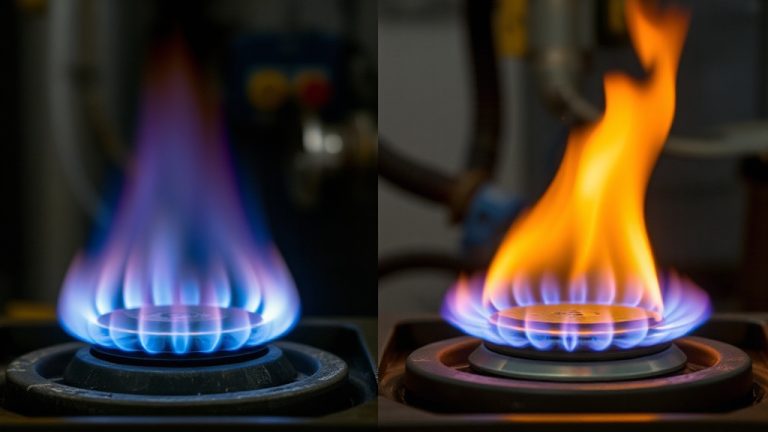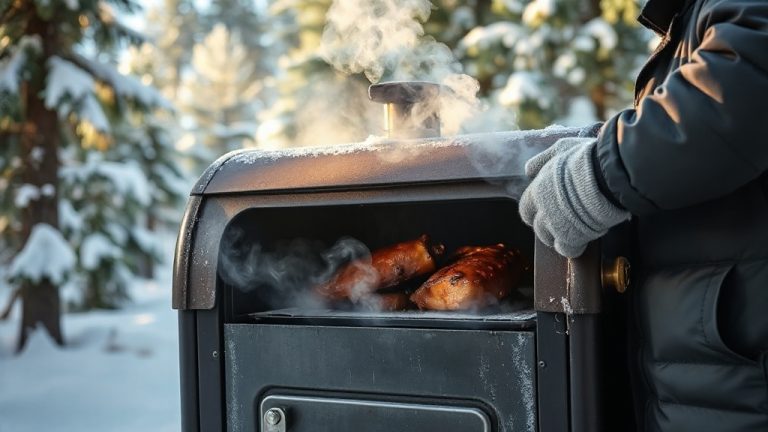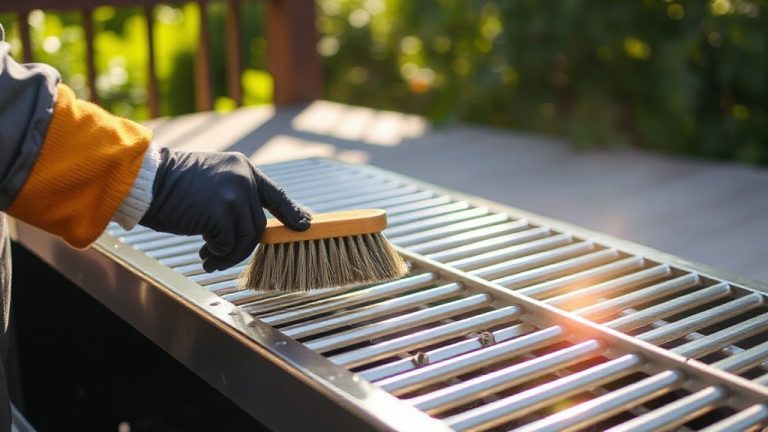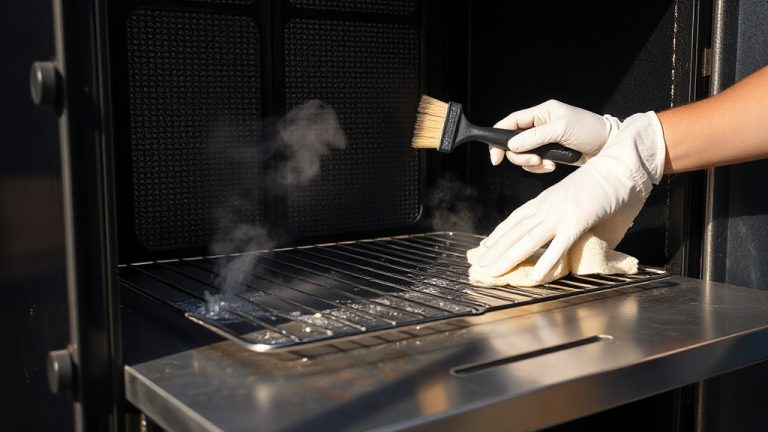Can You Smoke With Pine Wood? Get the Real Facts for Safety
You can smoke with pine wood, but it’s generally not recommended due to its high resin content, which produces thick, harsh smoke and bitter flavors.
Pine also releases harmful chemicals that pose health risks, especially if the wood is green or treated. Its fast burn rate and low heat efficiency make controlling the smoking process difficult.
For better flavor and safety, hardwoods like hickory or oak are preferred. Exploring these factors further will clarify why pine isn’t ideal for smoking.
Key Takeaways
- Pine wood produces thick, resinous smoke that imparts a harsh, bitter flavor unsuitable for smoking food.
- Burning pine releases toxic chemicals that pose health risks, including respiratory irritation and long-term diseases.
- Pine burns hot and fast, making it difficult to maintain consistent temperatures for slow smoking processes.
- Using only well-seasoned, dry pine can reduce some risks, but it is generally not recommended for culinary smoking.
- Hardwoods like hickory, oak, or maple are safer, healthier, and provide better smoke flavor for smoking meats.
Characteristics of Pine Wood in Smoking
Although pine wood isn’t traditionally recommended for smoking due to its high resin content, understanding its characteristics can clarify why it’s generally avoided.
Pine is a softwood with a more relaxed cell structure compared to hardwoods, contributing to its high resin levels. This structure also affects the smoke absorption in foods, making pine less ideal for smoking.
This resin produces thick, pungent smoke that can create bitter, overpowering flavors in smoked foods. While some regions use specific pine types for smoking, this is uncommon due to the challenging flavor profile and residue buildup in smokers. It is important to avoid softwoods like pine and cedar because of their resin content.
Compared to hardwoods like oak or maple, pine’s resinous nature results in less desirable smoke quality and requires more maintenance.
If you’re considering wood for smoking, pine’s characteristics make it a less suitable choice, especially when cleaner, milder hardwoods are available.
Health Implications of Burning Pine
When you burn pine wood, you release a complex mixture of hazardous substances, including fine particulate matter, volatile organic compounds, and carbon monoxide, all of which pose significant health risks.
These microscopic particles penetrate deep into your lungs, while toxic compounds like benzene and formaldehyde increase your cancer risk.
Burning treated lumber, including pine, releases highly toxic chemicals such as arsenic and chromium that can cause severe health issues.
Acute exposure can irritate your eyes, nose, and throat, trigger respiratory symptoms, and impair neurological functions such as judgment and alertness.
Long-term exposure aggravates chronic conditions like asthma and cardiovascular diseases and may lead to persistent respiratory disorders.
Additionally, the release of pollutants like volatile organic compounds from pine smoke contributes to poor air quality and environmental concerns.
Short-term exposure irritates airways and impairs brain function; long-term harm worsens asthma and heart disease.
Additionally, pine’s resin contributes to creosote buildup, raising chimney fire hazards. Vulnerable individuals—children, elderly, or those with heart and lung issues—face heightened risks, especially in poorly ventilated spaces.
Flavor and Smoke Quality From Pine Wood
Because pine wood contains high levels of sap and resin, it produces a dense, resinous smoke that imparts a strong, often bitter flavor, making it unsuitable for smoking food.
You’ll find its smoke harsh and overpowering, lacking the rich, balanced notes typical of woods like oak or hickory. Managing pine’s smoke is difficult due to its unpredictable burn and high moisture content. Using high moisture wood can negatively affect smoke quality and heat efficiency.
Key points about pine’s flavor and smoke quality include:
- Dense smoke with a strong resinous aroma
- Bitter, turpentine-like flavor not suited for culinary use
- Burns hot and fast, complicating slow smoking
- High moisture reduces heat efficiency and smoke quality
- Produces potentially unpleasant chemical compounds when burned
- It is important to avoid smoking with pine wood due to its high resin and oil content, which produces thick, undesirable smoke.
Recommended Alternatives to Pine for Smoking
Selecting the right wood for smoking considerably influences the flavor and quality of your food, so you’ll want to avoid pine due to its resinous smoke and instead opt for hardwoods like hickory, oak, or maple.
Properly seasoned hardwoods ensure clean smoke and avoid off-flavors commonly caused by resinous woods such as pine.
Hickory imparts a strong, sweet, bacon-like flavor ideal for beef, while oak provides a medium, earthy smoke suited for versatile meat types.
Maple offers a mild, sweet smoke, perfect for delicate meats. The burn rate of these hardwoods is generally slower and more consistent, producing smoke that enhances rather than overpowers the meat.
You can also consider pecan for a rich, nutty profile or alder for a smooth, slightly sweet flavor often used with fish and poultry. Blending woods like hickory with cherry or apple creates a balanced taste profile that complements various game birds and meats.
Combining woods, such as apple with hickory or oak with pecan, allows you to tailor smoke intensity and flavor complexity, ensuring ideal results without the bitterness associated with pine.
Safety Measures When Using Pine Wood
While hardwoods typically offer safer and more flavorful smoking options, some may still choose to use pine wood despite its drawbacks. If you do, prioritize safety to mitigate pine’s high resin content and rapid ignition risks.
It is important to remember that pine is a softwood and contains high levels of sap and turpenes, which can cause a funny taste and may make people sick when ingested.
Always use well-seasoned pine to reduce excessive smoke and avoid green or treated wood. Control flare-ups with spark screens and maintain a clear 10-foot perimeter free of combustibles.
Keep fire extinguishing tools handy and wear protective gloves when handling burning pine. Using protective covers can also help shield your smoker and fuel from moisture, which is especially important in damp conditions.
Use well-seasoned pine, control flare-ups with spark screens, and keep a clear, safe perimeter around your fire.
- Use only dry, mold-free pine wood
- Employ spark screens to prevent flying embers
- Maintain a safe, clear zone around your fire
- Keep fire extinguishing resources immediately accessible
- Ensure proper ventilation to minimize smoke inhalation
Frequently Asked Questions
Can Pine Wood Be Used for Smoking Fish or Only Meat?
You shouldn’t use pine wood for smoking fish or meat. Pine contains resins and creosote that release toxic fumes, causing harmful health effects and unpleasant flavors.
Whether smoking fish or meat, pine’s fast, hot burn makes temperature control difficult, increasing creosote buildup.
Experts and authorities strongly advise against pine in all smoking applications. Instead, stick to hardwoods like oak or hickory to guarantee safe, flavorful results every time.
How Does Pine Wood Affect the Cooking Time When Smoking?
Imagine a slow-burning candle struggling against a gusty breeze—that’s how pine wood affects your smoking time. Because pine burns cooler and produces less consistent heat, you’ll need to extend your cooking duration to reach the ideal internal temperature safely.
Its high resin content can create uneven smoke, so you must monitor closely, adjust heat, and possibly increase cooking time to balance flavor without overpowering your meat.
Is Pine Wood Suitable for Beginners Learning to Smoke Foods?
You shouldn’t use pine wood when learning to smoke foods. Its high resin content produces toxic compounds and acrid smoke, negatively affecting flavor and health.
Beginners often struggle distinguishing safe woods, so pine increases risk of poor smoking habits and food contamination.
Instead, choose seasoned hardwoods like oak or hickory, which provide more predictable results, better flavor, and safer smoking conditions.
Can Pine Needles Be Used for Smoking or Flavoring?
You shouldn’t use pine needles for smoking or flavoring food because their smoke contains high levels of toxic terpenes and resins that produce mutagenic, harmful particulates. This smoke irritates lungs and airways, worsening respiratory conditions.
While pine needles ignite easily, their combustion releases complex, unsafe compounds, and they lack a desirable flavor profile. For safe, flavorful smoking, opt for woods with proven, lower-toxicity profiles instead.
Does Pine Wood Require Special Storage to Maintain Smoking Quality?
Yes, you need to store pine wood carefully to maintain its smoking quality. Keep moisture below 40% by seasoning it for 6 months to 2 years in a well-ventilated, shaded area.
Stack logs off the ground with spacing to promote airflow and prevent mold. Avoid direct sunlight and use breathable covers if needed. Regularly inspect for pests and mold, and never use treated pine to guarantee safe, clean combustion.
Play It Safe: Skip Pine and Smoke Smarter
Using pine wood for smoking is like playing with fire—its resin content produces harmful toxins and an unpleasant taste. You shouldn’t smoke with pine because it releases creosote and soot, posing health risks and compromising flavor quality.
Instead, opt for hardwoods like hickory or apple for cleaner, safer smoke. Always follow safety measures to protect yourself and your food. Staying informed guarantees you avoid pine’s pitfalls and enjoy a better smoking experience.
